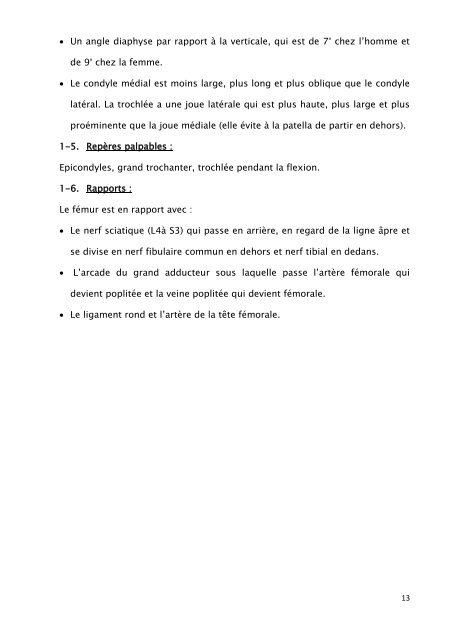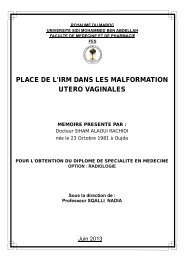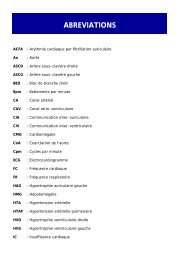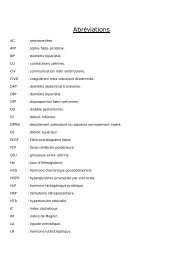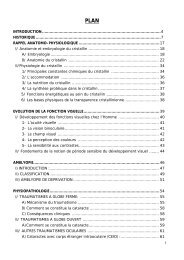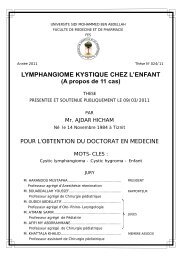Répartition de nos patients selon le sexe - Faculté de Médecine et ...
Répartition de nos patients selon le sexe - Faculté de Médecine et ...
Répartition de nos patients selon le sexe - Faculté de Médecine et ...
Create successful ePaper yourself
Turn your PDF publications into a flip-book with our unique Google optimized e-Paper software.
Un ang<strong>le</strong> diaphyse par rapport à la vertica<strong>le</strong>, qui est <strong>de</strong> 7° chez l‘homme <strong>et</strong><br />
<strong>de</strong> 9° chez la femme.<br />
Le condy<strong>le</strong> médial est moins large, plus long <strong>et</strong> plus oblique que <strong>le</strong> condy<strong>le</strong><br />
latéral. La trochlée a une joue latéra<strong>le</strong> qui est plus haute, plus large <strong>et</strong> plus<br />
proéminente que la joue média<strong>le</strong> (el<strong>le</strong> évite à la patella <strong>de</strong> partir en <strong>de</strong>hors).<br />
1-5. Repères palpab<strong>le</strong>s :<br />
Epicondy<strong>le</strong>s, grand trochanter, trochlée pendant la f<strong>le</strong>xion.<br />
1-6. Rapports :<br />
Le fémur est en rapport avec :<br />
Le nerf sciatique (L4à S3) qui passe en arrière, en regard <strong>de</strong> la ligne âpre <strong>et</strong><br />
se divise en nerf fibulaire commun en <strong>de</strong>hors <strong>et</strong> nerf tibial en <strong>de</strong>dans.<br />
L‘arca<strong>de</strong> du grand adducteur sous laquel<strong>le</strong> passe l‘artère fémora<strong>le</strong> qui<br />
<strong>de</strong>vient poplitée <strong>et</strong> la veine poplitée qui <strong>de</strong>vient fémora<strong>le</strong>.<br />
Le ligament rond <strong>et</strong> l‘artère <strong>de</strong> la tête fémora<strong>le</strong>.<br />
13


